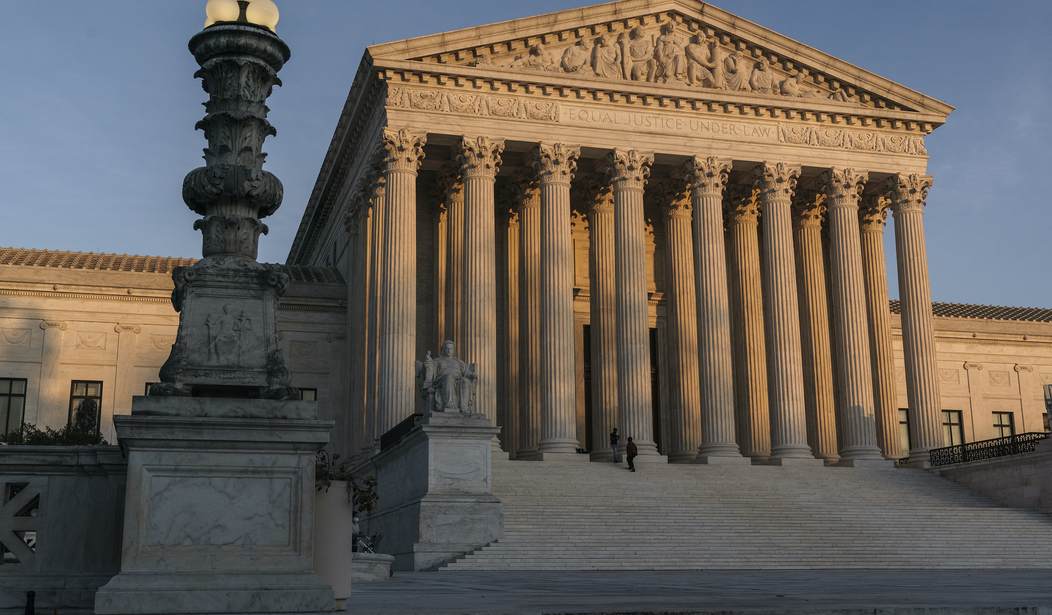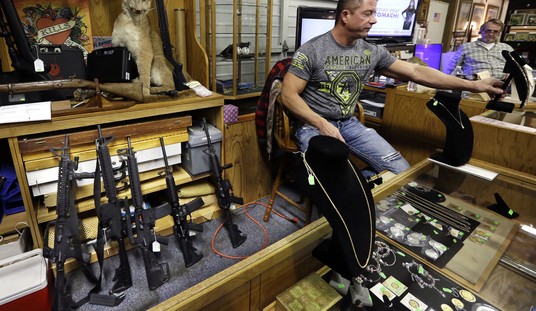While many gun owners are growing increasingly skeptical that the Supreme Court will grant cert to a Second Amendment case this term, gun control activists are still worried about the possibility, including New York Times columnist Linda Greenhouse, who covered the Court for the paper from 1978 to 2008. In a new op-ed, Greenhouse argues that the justices should shy away from taking any case that deals with our right to keep and bear arms, including a pair of cases challenging draconian carry laws in New York and New Jersey.
There are other Second Amendment cases in the pipeline, propelled toward the court in the expectation that Justice Amy Coney Barrett’s arrival has finally tipped the balance toward action on the gun rights agenda.
Thinking about that prospect in light of the banner headline that ran across the front page of The Times on Saturday — “In Indianapolis, 3rd Massacre in 3 Months — brought to mind a lecture that William Rehnquist, 15 years into his Supreme Court tenure as an associate justice and on the eve of becoming chief justice, gave in 1986 at Suffolk University Law School in Boston. He later published it in the school’s law review under the title “Constitutional Law and Public Opinion.”
“The judges of any court of last resort such as the Supreme Court of the United States work in an insulated atmosphere in their courthouse where they sit on the bench hearing oral arguments or sit in their chambers writing opinions,” he said. “But these same judges go home at night and read the newspapers or watch the evening news on television; they talk to their family and friends about current events. Somewhere ‘out there’ — beyond the walls of the courthouse — run currents and tides of public opinion which lap at the courthouse door.”
How can the Court accept a Second Amendment case now, wonders Greenhouse, given the headlines about mass shootings that we’ve seen in recent weeks? It’s an odd argument to make; that the Court should allow for the deprivation of civil rights because individuals are breaking the law and taking human life. In fact, I’d argue that the opposite is true; the Court needs to take a case dealing with the right to bear arms because our right to carry a gun in self-defense is never more important than when crime is rising and threats to public safety are increasing, as is the case right now.
Greenhouse then goes on to claim that the Court’s ruling in Heller that struck down D.C.’s ban on handguns actually created a right, rather than recognizing one.
Eleven years post-Heller, the decision itself has become more of a symbol and talking point than a legal opinion that people actually take the trouble to read.
If they did, they would see Heller as the limited decision that it was. Yes, it took the unprecedented step of interpreting the Second Amendment as conferring an individual right to own a gun, but the court applied that new right to the unusual circumstance of a District of Columbia law that prohibited private gun ownership. Only the District and Chicago had such a strict law. The court held only that individuals have a constitutional right to own a gun and to keep it at home for self-defense. For the vast majority of people in the country, Heller changed nothing as a practical matter; it constitutionalized a right that gun owners already enjoyed under state and local laws.
Yes, because most governments didn’t take the unprecedented step of banning handguns, despite the push from gun control groups in the 1970s and early 80s to do so. Beyond that, however, the Court didn’t suddenly interpret the Second Amendment to mean something completely new. The Heller decision didn’t overturn any existing Supreme Court precedent; rather it was the first case to specifically acknowledge that the right to keep and bear arms is an individual right that is not predicated on service in a militia.
Whether the Second Amendment also protects a right to walk down the street, or onto a college campus, or into a supermarket, a warehouse, a State Capitol, or a 12-year-old’s birthday party carrying a gun are questions that Heller did not answer. The current court can answer those questions in the affirmative if it so chooses. It has the votes. We will soon see whether it has the discipline and common sense to stay its hand.
There’s no common sense in staying away from a right-to-carry case if it means that more responsible gun owners will continue to be denied their right to bear arms in self-defense outside of the home. Greenhouse tries to couch her argument in terms of judicial modesty and restraint, but what she’s really demanding is that the Court stay away from Second Amendment cases because she’s afraid she and other gun control supporters won’t be happy with its decision if they accept a case.
There are other headlines that Greenhouse never mentions; record high gun sales, more Black Americans exercising their Second Amendment rights, and armed citizens fending off criminals with the help of their legally carried firearms. Greenhouse may not care about these things, but they matter too. I don’t think the Supreme Court should be swayed by the news cycle in any case, but both she and the justices on the Court should be aware that the stories she’s using as evidence for the Court to stay away are some of the same things driving many Americans to embrace their right of armed self-defense in the first place.









